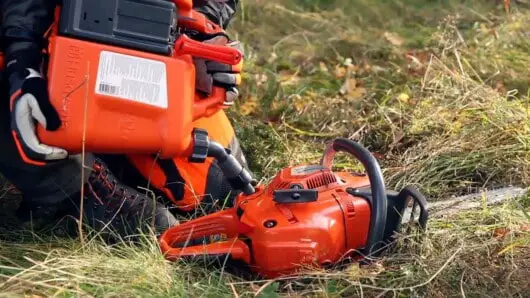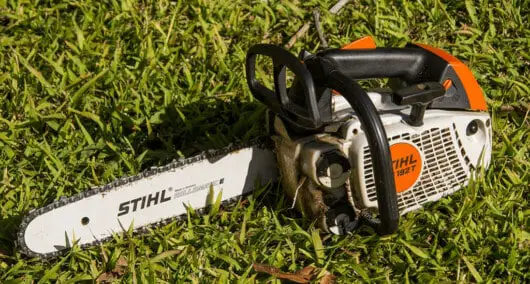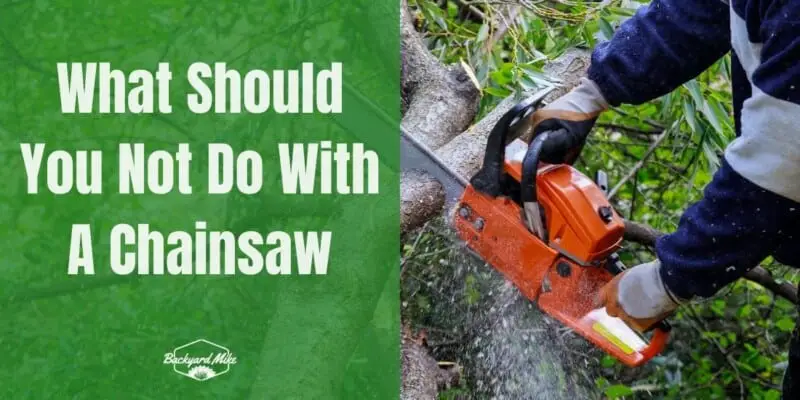Bought a new chainsaw and don’t know how to maintain it and what you can and cannot do with it? Worry not, continue reading, and you will get to know what all you can do and what should you not do with a chainsaw.
The Dos and Don’ts of a chainsaw
If you’re looking to do a lot of woodcutting or even casual trimming or pruning in your yard, having a chainsaw in your toolkit will be a great option. However, as with all the tools, especially the ones that run on an engine and have sharp edges, it is essential that you keep your safety and the tool’s safety in check. There are certain things that you should know that you can do and what should you not do with a chainsaw.
Knowing the dos and don’ts will help you not only use it to its best capabilities, but it’ll also help you maintain the chainsaw and keep it in mint condition for years to come. With a chainsaw, it is great to know about and prepare for the little details that will help you with your chainsaw.
The Don’ts of a chainsaw – What you shouldn’t do with a chainsaw
When you’re using a chainsaw, there are certain things that you should not do. Here are some of them –
Do not cut into the dirt
While no one intentionally plans to run their chainsaw straight into dirt, when you’re cutting close to the ground, you are almost on the verge of touching your chainsaw chain into dirt that has all the mud, crud, and rocks. It merely takes a few seconds for the chainsaw chain to be in the dirt to dull the blade.
Apart from dulling the cutters, the dirt will also wear out your chain much faster, causing it to stretch. Moreover, the dirt will wear the sprocket at the bar tip. You can support a log that is far enough off the group to give ample clearance to prevent an accidental slip into the dirt.
Never cut without proper blade tension
If your chainsaw has a chain that is too loose that it comes off the bar, it will create an unsafe working condition when you’re cutting. A chain that is overly tight or overly loose will wear out the drive sprocket while causing rapid chain and bar wear. For determining if the chain has the correct tension, you should pull the chain and notice if the drive links are still in the bar groove. In case the links come out of the bar, it means that the tension in the chain is too loose.
Avoid filling the chain lube reservoir with used motor oil
While many people might feel that it is free to use used motor oil so why not do it, but you should never do it. Filling the reservoir with used motor oil instead of using proper lube will cost you a lot in the long run because of the accelerated bar and chain wear. Used motor oil will contain fuel, water, acid, and soot, and none of these ingredients are great for moving parts. Wouldn’t that be the reason why you drained out this oil from the engine?
Always avoid the used motor oil and always go for the real lube or real bar and chain oil for the lube reservoir.
Don’t refuel the chain saw when it is hot
Unless you are fine with putting yourself on fire, never try to refuel the chain saw when it is hot. Even if you’re fine with it, why burn a proper chainsaw just because you don’t have enough patience for the chainsaw to cool off?
The heat from the steaming hot engine will vaporize the fuel as you’re pouring it into the tank. In case the vapor ignites, you will basically be pouring gasoline into the fire. If you wish to see your beloved chainsaw to be in a condition to be used the next time, you should let it cool for 10-20 minutes before you refuel it. If you find the engine being too hot to touch, take a walk, call a friend, or watch a movie and then come back and refuel.

Avoid putting the pedal to the metal with the brake on
When you’re using a chainsaw, there is a safety kickback braking mechanism to stop the blade by locking the clutch drive sprocket. However, you can end up accidentally activating the brake by knocking the kickback handle as you’re setting the chainsaw against a stump or a tree limb.
In case you hit the throttle too hard with the brake on, you can end up burning the centrifugal clutch in just seconds. In case the chain does not spin when you’re squeezing the trigger, stop instantly, and then check whether the kickback brake is on or not.
Avoid cutting with a dull blade
Cutting trees and branches with a sharp blade will actually extend the life of your chainsaw. This is the case because a sharp blade will pull itself into the wood and glide across the surface, while a dull blade will need extra downward pressure. The pressure will wear out the bar, clutch sprocket, drive links, and clutch. Once you notice that the blade has started making sawdust instead of chips, you should stop immediately and sharpen the blade.
Do not let retain old gas in your tank over the winter
You should always add the fuel stabilizer at the pump as you’re filling the gas can. Even with stabilized gas, it is recommended that you should empty the tank and run the carburetor dry before you store the chainsaw.
Emptying the tank will prevent any corrosion and dirt formation in the tiny passages of the carburetor diaphragm. You should pour the old gas out, then start the engine until it runs out of the last bit before you put it away.
Do not run the chain saw if it has a dirty air filter
Chainsaws tend to kick up a lot of dust, and the air filter is tasked with preventing the dust and dirt from entering the combustion chamber. If you do not clean or replace the air filter, the engine will suck some of the dirt and dust into the combustion changer and cause excessive wear. In case you notice a loss of engine power or excessive fuel consumption, you should check the air filter. Most filters can be easily cleaned, while others need to be replaced. If you have to go for the latter option, replacement filters are fairly cheap, especially when you compare that to replacing a new chainsaw engine.
The Do’s of using a chainsaw – What you should do with your chainsaw
If you own a chainsaw, there are certain things that you should do for maintaining it and ensuring that it works smoothly for years to come. Here are some of them –
Keep the blades sharp for maintaining chainsaw safety
Sharp blades will cut far more effectively than the ones that are dull. Even if your chainsaw is able to make it through a piece of wood, then having dull blades will force you to use much more pressure when cutting, and this wears out some of the other components in the chainsaw. Further, dull blades will increase the risk of chainsaw bucking, so keeping the chainsaw blades sharpened is among the most pivotal safety tips.

Refuel the chainsaw safely
If you’re using an electric chainsaw, you will not have to worry about having fuel-related problems. However, if you own a gas-powered chainsaw, you will need to learn the right way and the right time to mix the chainsaw fuel and how to do it safely.
One of the ways to safely use a chainsaw would be to never refuel the chainsaw when it is still hot. The heat from the engine could potentially ignite the fuel. Instead of taking the risk, you should let the chainsaw cool down for a while and then add the fuel.
Maintain proper chain tension
Having proper chain tension will be one of the most important aspects of using the chainsaw properly and maintaining it. A loose chainsaw might come off the bar when the machine is running, whereas if the tension is too tight, it would damage components of the chainsaw. For preventing injuries and keeping a high life of the chainsaw, you should check for the chain tension before you turn the chainsaw on.
Engage the chain brake if the chainsaw is idling
When you are using the chainsaw, it is likely that your chainsaw will be idle at some point. Whenever your chainsaw is idle, you should remember to engage the chain brake. This will help you take better care of your chainsaw, while also ensuring that it works smoothly for many years to come.
Use the bar cover when your chainsaw is powered off for keeping the bar from injuring you
While it is important to take measures when the chainsaw is in use, it is equally important to take measures when you’re storing the chainsaw. When the chainsaw is powered off, you should always keep the chainsaw in a bar cover, as it’ll prevent the sharp edges from cutting you.
Conclusion
There you have it, some of the things that you should do and what should you not do with a chainsaw. Following the proper standards will help you avoid mishandling your chainsaw, while also ensuring that it functions without any issues for a long time.


